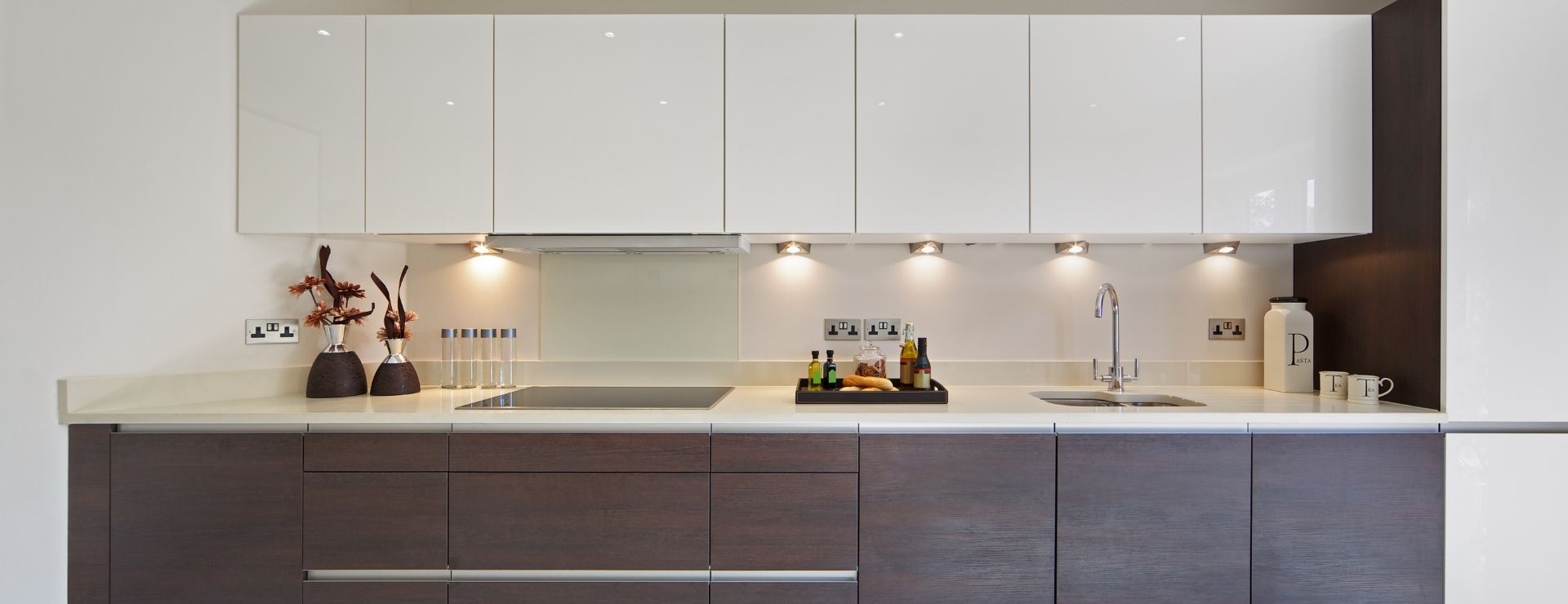If you’re on a tight budget or have an exact vision for your kitchen, fitting your kitchen yourself might be a tempting option. Before ripping out your entire kitchen and getting stuck, here are our tips on how to fix a kitchen.
How Easy is it to Fit a Kitchen?
Fitting a kitchen not only requires you to apply yourself physically but also mentally to navigate your way through instructions and problem solve if you hit a brick wall. Given this and the skills to use power tools, fitting a kitchen should be achievable for most DIY-ers.
Kitchen Fitting DIY Tips
Our tips have not been created to act as a step by step guide but to shed light on how you can improve the design of your space and be more efficient in your build. Designed to serve everyone from beginners to experienced kitchen fitters, you’ll have no problem following along.
Observe Once Dismantled
Once stripped of your rigid kitchen units, sink and worktops, observe your bare kitchen. This is the best time for you to treat any previously hidden, underlying issues such as damp, that may have been lurking behind your kitchen wall cabinets. Whilst in this phase of your build, we recommend adding your first layer of paint while there are no hard to reach areas. Don’t worry, it doesn’t need to be perfect as the final layers will go on once everything has been installed. It’s also good practice to use this time to map out the most efficient floor plan and revise any existing versions to make every inch of your kitchen work for you.
Maximise Space
Now that you have a blank canvas, also think about adjusting the current system of organisation in your kitchen. Is there anything on your kitchen worktops that can be hidden away by giving it some cupboard space? Creating kitchen units to hide appliances such as oven housings can help to add more usable space on your countertops for cooking and open up your kitchen to avoid it feeling small.
Turn to Your Trusty Friend Google
While you might have dotted all the I’s and crossed the T’s in your plan, it’s a good call to turn to Google and Pinterest for some design inspiration – particularly as there may be design considerations that you hadn’t thought about. For example, kitchen sinks are often fixed in front of widows. Three areas we urge you to look at when planning are your source of light, number of appliances, the size of your room, the number of sockets required and where. You can read more, in our post on The Essential Guide to Kitchen Layouts
Gas and Electricity
It’s probably best not to take a gamble on safety. We recommend getting all electrical and gas installations done by a professional to minimise the hazards in your home. In the UK this is a legal requirement when fitting gas appliances which requires the work of an engineer with a gas safety certificate.
Be as Precise as Can Be
When measuring and mapping out where to place your new fixtures and fittings, precision is key. Whilst it sounds simple, google’s collection of construction fails beg to differ. Avoid creating a meme inspired kitchen by using a spirit level to ensure that everything is straight. It’s also important to think logically about the practicality of your design. Are there any doors that will be blocked from opening? Are the sockets too close to the cooker or too high from the countertops? These are all important questions which will help you to achieve your ideal kitchen.
We hope that you found our tips helpful in improving your kitchen layout. For building your dream kitchen, we at Kitchen Door Hub offer an extensive range, including ready made or made-to-measure kitchen cupboard doors. All covered by a 6 year warranty and made in the UK for projects built to last.



